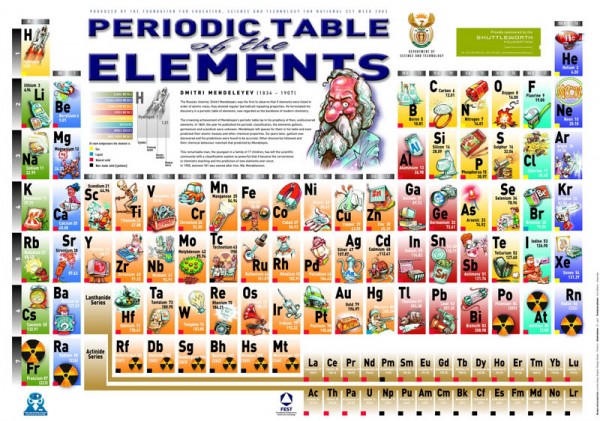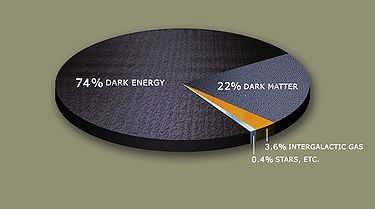 To recap, in our first chapter of this Big History Blog Series, we learned that the Big Bang theory is based on the observation that our universe is expanding and hence that it must have once been smaller. Winding back time we imagined the infinitesimally small point of singularity. At the point in time we can call the beginning of time, we went from nothing or a something that lays beyond our understanding, to the existence of quarks and the laws of gravity and electromagnetism. This combination caused quarks to explode and become protons and electrons. Protons and electrons in turn combined to make hydrogen and helium atoms.
To recap, in our first chapter of this Big History Blog Series, we learned that the Big Bang theory is based on the observation that our universe is expanding and hence that it must have once been smaller. Winding back time we imagined the infinitesimally small point of singularity. At the point in time we can call the beginning of time, we went from nothing or a something that lays beyond our understanding, to the existence of quarks and the laws of gravity and electromagnetism. This combination caused quarks to explode and become protons and electrons. Protons and electrons in turn combined to make hydrogen and helium atoms.
In chapter two of the Story of Us, we will look at how we transformed from hydrogen and helium atoms, to bunch more types of elements that make up all the atomic matter and energy in our universe.
First let’s put atomic matter and energy in perspective.
You can see in the diagram above, that only 0.4% of our universe is atomic matter and atomic energy that comprises stars, planets, and lifeforms such as ourselves. Most of our universe is dark energy and dark matter, two hypothetical forms of energy and matter that are largely undetectable but are inferred from their gravitational effects and from the increasing rate of the universe’s expansion. (Basically, I gather, dark energy and dark matter are names given to the who-knows-what and the who-knows-how that permeates and permutes the incomprehensibly huge universe.)
Okay, so now that we know what tiny slice of the universe the rest of Our Story is located in, let us continue. How did we get from a point of singularity to the complexities we observe around us today?
The first step (about 200 years after the Big Bang) was the formation of stars, a creation we owe to gravity.
After millions of years of floating around in clouds hydrogen and helium, gravity pulled some clouds together. The huge clouds contracted and heated causing atoms inside to move faster and collide. Hydrogen atoms fused to create pure energy – creating massive atomic bombs – which became the first stars.
Again thanks to gravity, these stars collected into galaxies (like our Milky Way), which collected into “clusters” of galaxies, and the universe kept expanding and creating new clusters further apart, as it still continues to do today.
The second step in this process of increasing complexity was the appearance of new elements, like carbon and iron, to which we can thank the death of large stars.
When hydrogen atoms ran out the center of stars collapsed, temperatures escalated and now it was the helium atoms turn to fuse together to create elements up to iron, number twenty-six (ie it has twenty-six protons in its nucleus.)
The third step (probably within a billion years of the Big Bang) was the explosion of stars who had new elements floating around inside – a “supernova”.
Out of this ‘colossal explosion’ (as David Christian calls it), the supernova gave us another new sixty-six elements, giving us the periodic table (remember it from science class?) with ninety-two elements for the universe to now play with.
In sum, the elements from hydrogen to uraniumall our elements are made from different combinations of protons and electrons, which are all made up of quarks pulled together by gravity. These different combinations were created by the explosion of dying stars that contained elements from the death other stars that came from clouds of hydrogen and helium pulled together by gravity.
Where did the law of gravity come from? Who knows! But we should “thank God” that it did, because without law of gravity no-thing would exist.
And so, children of the stars, I bid you goodnight and leave you with this time-line. One billion years down, just thirteen billion years to go. Have a nice weekend!!!
References:
David Christian, This Fleeting World: A short history of humanity, Berkshire Publishing Group (Massachusetts 2008), pp. xx-xxi.
Picture credits:
Dark matter pie – pulled from wikimedia commons and which originally came from NASA online.
Periodic table – electrical resources.com (http://www.electrical-res.com/families-of-the-periodic-table/)
Cosmic time-line – I’m not sure where I got this, I found it in my old computer files, so if anyone knows its source please let me know.


The root of your writing while sounding agreeable in the beginning, did not sit very well with me personally after some time. Somewhere throughout the sentences you managed to make me a believer unfortunately just for a while. I however have a problem with your leaps in assumptions and one would do well to fill in all those gaps. In the event you actually can accomplish that, I could definitely end up being amazed.
this was very helpful for my project